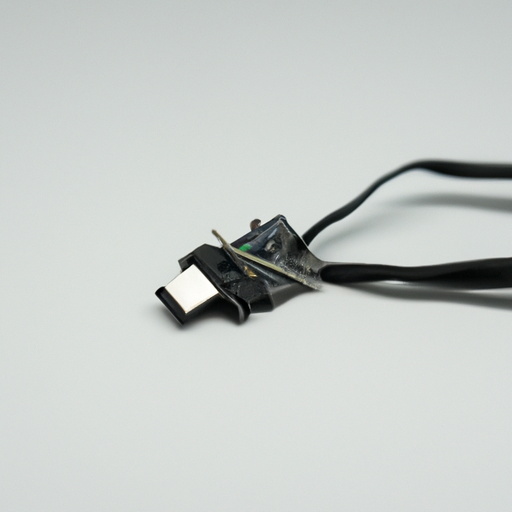When it comes to choosing the spot for a fixed electrical sensor, there are several factors to consider in order to ensure optimal performance and functionality. Fixed electrical sensors are used in a variety of applications, including monitoring temperature, humidity, pressure, and other environmental conditions. The placement of these sensors is crucial in order to accurately capture data and provide valuable insights for decision-making.
Here are some key considerations to keep in mind when choosing the spot for a fixed electrical sensor:
1. Purpose of the sensor: The first step in choosing the spot for a fixed electrical sensor is to determine the purpose of the sensor. What specific data are you looking to capture? For example, if you are monitoring temperature, you will want to place the sensor in a location that accurately reflects the temperature of the area you are monitoring.
2. Environmental conditions: Consider the environmental conditions of the area where the sensor will be placed. Is the area subject to extreme temperatures, humidity, or other factors that could affect the performance of the sensor? It is important to choose a spot that is representative of the overall conditions you are monitoring.
3. Accessibility: Choose a spot that is easily accessible for maintenance and calibration. You will need to periodically check and calibrate the sensor to ensure accurate readings, so it is important to choose a spot that is easy to reach.
4. Interference: Avoid placing the sensor in areas where it may be subject to interference from other electrical devices or sources of electromagnetic radiation. This can affect the accuracy of the sensor readings and lead to unreliable data.
5. Placement height: Consider the height at which the sensor should be placed in order to capture the most accurate data. For example, if you are monitoring temperature, placing the sensor too close to the ground or too high up can affect the accuracy of the readings.
6. Calibration: It is important to calibrate the sensor regularly to ensure accurate readings. Choose a spot that allows for easy access to the sensor for calibration purposes.
7. Data collection: Consider how the data collected by the sensor will be used and who will have access to it. Choose a spot that allows for easy integration with your data collection system and ensures that the data is easily accessible to those who need it.
In conclusion, choosing the spot for a fixed electrical sensor requires careful consideration of the purpose of the sensor, environmental conditions, accessibility, interference, placement height, calibration, and data collection. By taking these factors into account, you can ensure that your sensor is placed in the optimal spot to provide accurate and reliable data for your monitoring needs.
When it comes to choosing the spot for a fixed electrical sensor, there are several factors to consider in order to ensure optimal performance and functionality. Fixed electrical sensors are used in a variety of applications, including monitoring temperature, humidity, pressure, and other environmental conditions. The placement of these sensors is crucial in order to accurately capture data and provide valuable insights for decision-making.
Here are some key considerations to keep in mind when choosing the spot for a fixed electrical sensor:
1. Purpose of the sensor: The first step in choosing the spot for a fixed electrical sensor is to determine the purpose of the sensor. What specific data are you looking to capture? For example, if you are monitoring temperature, you will want to place the sensor in a location that accurately reflects the temperature of the area you are monitoring.
2. Environmental conditions: Consider the environmental conditions of the area where the sensor will be placed. Is the area subject to extreme temperatures, humidity, or other factors that could affect the performance of the sensor? It is important to choose a spot that is representative of the overall conditions you are monitoring.
3. Accessibility: Choose a spot that is easily accessible for maintenance and calibration. You will need to periodically check and calibrate the sensor to ensure accurate readings, so it is important to choose a spot that is easy to reach.
4. Interference: Avoid placing the sensor in areas where it may be subject to interference from other electrical devices or sources of electromagnetic radiation. This can affect the accuracy of the sensor readings and lead to unreliable data.
5. Placement height: Consider the height at which the sensor should be placed in order to capture the most accurate data. For example, if you are monitoring temperature, placing the sensor too close to the ground or too high up can affect the accuracy of the readings.
6. Calibration: It is important to calibrate the sensor regularly to ensure accurate readings. Choose a spot that allows for easy access to the sensor for calibration purposes.
7. Data collection: Consider how the data collected by the sensor will be used and who will have access to it. Choose a spot that allows for easy integration with your data collection system and ensures that the data is easily accessible to those who need it.
In conclusion, choosing the spot for a fixed electrical sensor requires careful consideration of the purpose of the sensor, environmental conditions, accessibility, interference, placement height, calibration, and data collection. By taking these factors into account, you can ensure that your sensor is placed in the optimal spot to provide accurate and reliable data for your monitoring needs.
